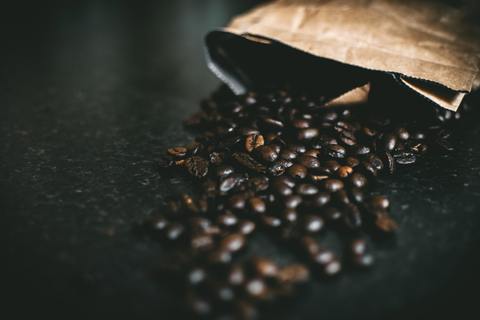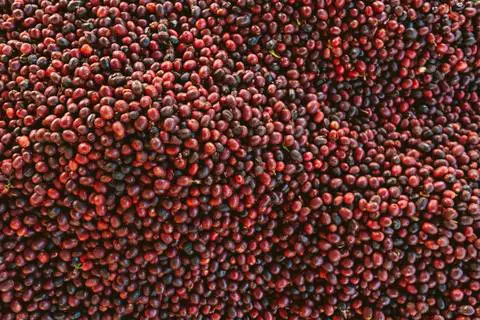Imagine a cup of coffee from Indonesia, that isn’t from Sumatra, and is also sweet, spicy, clean, light bodied in taste, but with a deep and brooding profile. Such a cup can be made using beans from a region of east Indonesia known as Sulawesi (also known as Celebes Coffee).

Of all coffee growing regions, perhaps the one that gets most often overlooked is Toraja, Sulawesi. The island of Sulawesi is located east of Borneo, and west of the Maluku Islands, right between the tropics of Cancer and Capricorn. In Sulawesi, the Toraja growing region is located right between South and West Sulawesi and is situated between 1100-1800 meters above sea level. This humidity and high elevation are two of the largest factors contributing to the praise that Toraja coffee gets. And while Indonesian coffee generally gets a bad rap, as about 90% of beans grown there are of the lesser quality robusta variety, Sulawesi Toraja always grows the more delicate, but tastier arabica variety.
Arabica vs. Robusta: A Primer
But what separates these two types of plants? One of the most often noted differences between arabica and robusta coffee is the caffeine content.
Robusta, as the name may suggest, has more caffeine than arabica. This excess caffeine, in addition to a reduced amount of natural sugars, creates what is described by many as an off putting and bitter taste. However, the robusta plant is hardier than the arabica plant and is therefore less expensive to grow. This allows for less expensive production than arabica beans. Robusta can generally be grown anywhere with even a sliver of humidity, whereas arabica needs a more particular climate that is consistently humid and wet. Extensive robusta growing regions can be found Vietnam, Indonesia, Brazil, and India. However, even these robusta growing countries also have arabica growing regions- Guatemala, Guinea, Brazil, and Indonesia all have regions producing large quantities of arabica beans. This highlights the varied geography of these countries, as they contain the different climates necessary to support these two very different plants.

When did Sulawesi start making coffee?
As with most growing regions, coffee didn’t originate in Sulawesi. The island itself, between the years of 1699 and 1945, was owned and colonized by the Dutch, and was initially called Celebes. During this time, coffee plants and beans were shipped there and cultivated, and by the 1970’s, business certainly picked up. However, starting in the 1990’s, Sulawesi’s coffee industry was booming. Because of how long coffee has been around in Sulawesi, it is deeply rooted in their culture, and is a major part of their economy.
What makes Sulawesi Toraja coffee special?

A key feature of Sulawesi Toraja is its processing method, commonly referred to as the Giling Basah wet-hulled method. This method, often refered to as “wet hulling”, freshly picked coffee cherries are put into a pulper that removes nearly all of the coffee fruit. The remaining thin layer of mucilage on the beans is left there for 24 hours and then removed. Afterwards, the beans are dried and the are ready for roasting. This method can cause the beans to roast unevenly, but the uneven roast is considered part of the experience. This unique process equates to a cup of coffee similar to a cup of pu-erh tea: one that is earthy, musty – in a good way – and very bright. And while this profile might not be for everyone, it is essential to the overall aroma and flavor profile of the beans themselves. Compared to Kopi Luwak, where civet cats pass the beans through their digestive track, the process of allowing the remaining coffee fruit to sit on the bean for a little while is pretty tame!
While Sulawesi Toraja coffee can be roasted to any extent, a medium to dark roast is usually preferred, as the longer roasting time is essential to bringing out some of the spicy and earthy tones of the beans. Like Hawaiian Kona coffee, the price of Toraja coffee varies significantly depending on the source, and its legitimacy. With that in mind, the average cost of a pound of Toraja hovers around $22.00 (in 2019). Do pay attention to the prices though, because if you see a shockingly good deal from a retailor of a dubious nature, it might not be real Toraja coffee, and could potentially be robusta beans. In relation, if you roast your own coffee, a pound of green Toraja beans can be purchased for around $7-$8.
What is the “White Eagle” variety of Sulawesi Toraja?
The “White Eagle” variety is considered the most special variety of Sulawesi Toraja. Often refered to as the “Crown Jewel of Toraja Arabica Coffees”, only 300 to 600 bags are produced per year. “White Eagle” is grown at 4,300 ft elevation on trees similar to the original Toraja trees in a remote area secluded from civilization, taking four whole days to transport the beans for processing. The beans are smaller than with other varieties of Toraja, but contain a different flavor profile- considerably smoother with a very balanced acidity- containing notes of strawberry and chocolate, particularly in the aftertaste.
Finding a Middle Ground Between Coffee Drinkers Around the World
The beauty of Sulawesi Toraja coffee is the middle ground it strikes between coffee drinkers, especially between tastes in Japan, the United States, and Europe. Toraja appeals to both types of coffee drinkers: those who prefer a heavy body and lingering mouthfeel, and those who are fond of a fruity and crisp cup. The duality that this coffee boasts connects not only generations, but people all across the world who love a nice cup of quality coffee.

